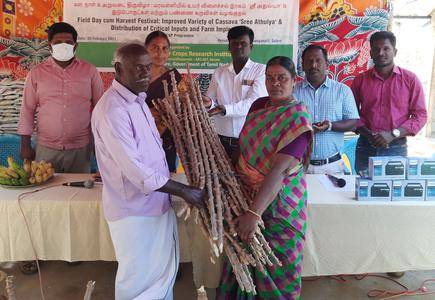
The ICAR-Central Tuber Crops Research Institute and the Department of Horticulture in Thiruvananthapuram have developed a mosaic disease-resistant cassava variety called 'Sree Raksha.'
In 2021, the Institute developed a cassava variety that is resistant to mosaic disease, which is frequent among tapioca plants in this region. According to scientists, the Sree Raksha was first introduced in low batches in Salem since tapioca cultivation is prevalent in the Salem, Namakkal, and Erode districts.
According to R. Muthuraj, Principal Scientist, the Sree Raksha variety is not only resistant to cassava mosaic disease but also produces a high yield and has a high starch content.
According to Mr. Muthuraj, the new variety can produce 45 tonnes per acre and has a starch level of 28%. He claimed that 500 stems were first provided to farmers and that they could be cultivated on 1.5 to two acres. In the future, more stems will be provided to farmers.
Recently, a high-yielding variety called 'Sree Athulya' was produced here. The variety has a yield of 39 tonnes per hectare and a starch content of 34.8 percent. The cultivation duration of variety, according to experts, is 9-10 months.
More about Cassava Mosaic Disease: Cassava is susceptible to a wide variety of virus-borne diseases. Cassava mosaic disease (CMD) is the most severe and common of these diseases, severely restricting crop yield. CMD causes mosaic, mottling, malformed and twisted leaflets, and an overall reduction in the size of leaves and plants. Cassava plants infected with CMD yield few or no tubers, depending on the severity of the disease and the age of the plant when infected.
Cassava mosaic disease (CMD) is induced by whiteflyborne viruses of the genus Begomovirus which falls under the family Geminiviridae. When whiteflies suck sap from plants, they take up the virus, which they then carry and inject when they feed on the next plant. To prevent the disease from spreading to healthy plants, diseased plants must be removed and killed.
















